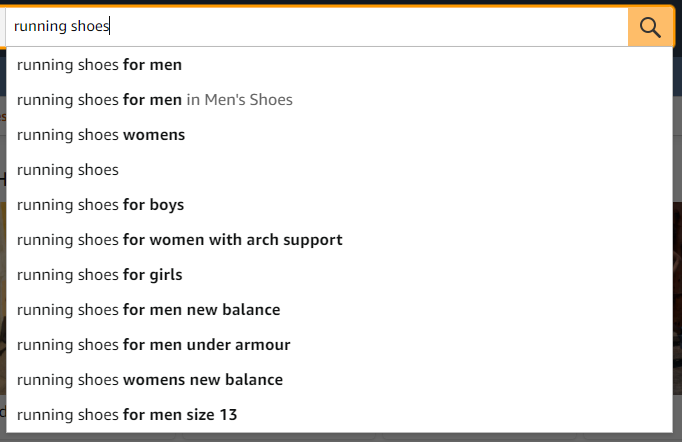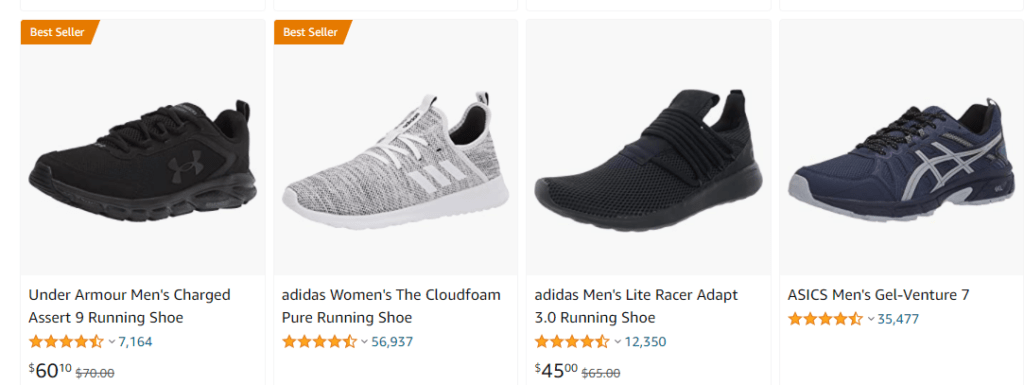How do you get started with Amazon PPC keyword research? What should you look out for?
Amazon has become one of the biggest eCommerce sites in the world. The company offers a wide range of products from electronics to clothing and even books. As such, they offer a huge variety of keywords that you can target.
Keywords play a vital role in driving traffic to your site. They also influence your ranking in Google. If you want to rank high on Amazon, then you need to optimize your keywords. This guide will show you how to effectively do it.

Why do Amazon PPC Keyword Research?
Amazon is a search engine that ranks products based on how well they match keywords. Although Amazon’s algorithm is simple, it still ranks products based on many different factors and one of those is keywords. Keywords are important because they help people find what they’re looking for.
Keywords and Search Terms
There is a big difference between keywords and search terms. Keywords take your money; search terms show up on customers’ screens. Knowing the difference is crucial to your success with Amazon PPC.
“Another effective way of generating more traffic to your listings which also impacts organic rankings is by running PPC campaigns. But before your invest in it, know if it’s worth it for you or not.”
From an advertisers’ point of view, keywords are the words that they (advertisers) bid on to appear on the first page of search results. On the other hand, search terms are the terms customers type into the search bar when looking for something to buy. These are the words that show up in your ad copy and on your landing pages.
Your keywords can trigger potentially hundreds of search terms. You can control where you appear using keyword match types. You can bid on exact match keywords such as “climbing” and “shoe” to appear for those exact terms. Plural keywords can also be used. For example, if your bid is on “climbing,” you’ll show up for “climbs” or “climbed.” An exact match gives you the most control over where your search terms appear, but it may take some time to get results.
Phrase Match Keywords give you moderate control over where your search term appears. Broad Match keywords give you the least control over how many times your search term appears.
How does Amazon's search algorithm work?
The search engine giant has a complex algorithm called A9 that determines which products appear at the top of its results page. This algorithm takes into consideration many factors including price, reviews, and customer ratings. If you’re looking to increase sales from Amazon PPC, it’s important to understand this algorithm so you know what keywords to target.
Yes, it’s super useful to think of Amazon as a search engine. At the same time, though, it’s critical to remember that Amazon is a marketplace. It’s a site to sell stuff and Amazon really really wants to sell stuff. Given that, it comes as no surprise that the products that win the top spots are the most relevant and high converting ones. A highly converting product, as you know is one that actually convinces prospects to buy after they click through to the product details pages.
There are reasons Amazon does not show you dog food when searching for “running shoes”. Although our pets love to chew and play with them, they are not dog food. Nobody wants a search engine that populates the results with irrelevant products. A9 is programmed to operate accordingly.
Follow our PPC strategy to create successful campaigns.
Amazon keywords and product relevance
Without exercising the keyword best practices, your product on Amazon will be irrelevant and you don’t want that. For example, if you have a blog about “How to Optimize Amazon PPC Campaigns” and your keyword is “optimize amazon PPC campaigns”, you need to make sure that your keywords can be found in the page title, URL, meta description, strategically placed in the content, etc.
You do all these to make sure that your article will be deemed relevant when someone searches for your target keyword on Google.
The same is true with Amazon.


Amazon keywords and your product title
The most important thing to remember here is that it’s not just about finding the right keyword – it’s about finding the right combination of keywords that will lead to conversions.
It goes without saying that your product title is the most important part of your listing. Think about this for a moment, when you search for something on Amazon as a customer, do you click on each and every result and see if this is the one you’re looking for, or is it even relevant in the first place?
Of course not. Just by looking at the title of the products, you should be able to tell if you’re looking at the right product. That’s how important keywords are in your product title as far as relevance goes.
That said, you have to put your most important keyword at the beginning of your title not only because of the above reason but also, this will make sure that your keyword will be visible no matter the screen size from which device your potential customer is browsing.
Amazon keywords and your product details
Bullet point lists are an effective way to highlight key information about products. This is a great opportunity to nudge prospects closer to adding your product to the cart. You should write these bullets as if you were speaking directly to the customer.
Your product should be described as being useful and easy to use. You should also describe how your product is different from other products. Your product should be something that people want to buy right away.
You should optimize your product description page because A9 will use your keywords to determine if your product is relevant to the search results. Your product title and keyword combination should be optimized to match the intent of the user.
Amazon keywords and your seller account
Hidden keywords allow you to provide more information to search engines about your products. These keywords are similar to alt tags, but they apply to your entire website. It’s important to use this space for keywords that are not found elsewhere in your listing.
A hidden keyword is a lot like alt text for a product. You can create a hidden keyword by using your brand name as the keyword and then adding keywords related to your niche. For example, if you sell homemade wristbands, you could add the words “for republicans”. This would be a hidden keyword because it doesn’t appear anywhere else on your website or listing.
Don’t use commas, semi-colons, or any other type of punctuation to separate your backend keywords. This, like repeating information, is an unnecessary wastage of characters.
Conducting Amazon Keyword Research
To get started, you need to determine what keywords to target. This will depend on the products you plan to sell and whether they’re new or existing. If you’re selling new items, then you’ll most likely want to focus on long-tail keywords. These are less competitive than broad keywords and will allow you to rank higher in search results.
If you’re selling existing products, then you’d probably want to focus on short-tail keywords. These keywords are highly competitive and could give you better conversion rates.
You should also consider using negative keywords. Negative keywords prevent your ads from appearing when someone searches for terms related to your product. For example, if you sell high-heel shoes, you might not want your ad to show up when someone searches for “running shoes.”
Amazon SEO Keyword Research: Proven Methods
Keywords are important because they help customers find your product when searching online. You should use them wisely by making sure they’re relevant to your product and include enough detail about what your product does.
Below are the different methods for finding the right keywords.
Basic Keyword Strategy for Amazon PPC
The most important thing to remember when doing keyword research is to understand what people are searching for. If you don’t know what keywords they’re using, then you won’t be able to find them. This means that you’ll need some way of finding out which keywords people are using to search online.
Keywords behave differently on Amazon as compared to Google. You should optimize keywords individually but also think about the entire phrase. When you’re launching your PPC campaign or planning your launch strategy, you should think about how many people might be searching for each keyword phrase.
We need to optimize our content for different keywords. Frequency isn’t a ranking factor for Amazon SEO. Repeating the same keywords multiple times isn’t going to help you get more sales. You need to focus on the keywords that convert well.
Below are the proven methods in doing Amazon PPC keyword research:
1. Expanding Keyword Approach
This approach works for beginners, products that don’t have a fairly successful competition in the platform, and new-to-category products.
Here, you start with keywords that you want your product to rank for.
Then, you expand on them to identify long-tail keywords that may be typed in by more specific customers and, at the same time, have less competition, making it easier to rank. Here’s how you should do an expanding keyword approach:
- Look at your product and think, what would potential customers be typing in the search box if they don’t know your brand name or product title? How would they describe your product and its uses?
- After brainstorming as many keywords as possible, the next step would be to run those in a keyword research tool to find long-tail keywords.
- Next, run the expanded keywords through a frequency counter tool like Write Words or Merchant Word’s Keyword Explorer. A high search volume means that it has been used by many and that they are relevant.
- Lastly, write your product title and description using those keywords. Incorporate as many keywords as you can while focusing on the end result which is conversion.
2. Competitor Keyword Approach
This keyword approach is one of the most common ways people try to find new keywords. But it’s not always effective.
Keywords that are already ranking well for other similar products are a great starting point. These keywords should be added to your list of keywords to target.
Because Amazon’s primary factor in rank is conversion rate, we can make an oversimplified assumption that if a listing ranks well for a particular keyword, then that keyword should generate sales for that list. Here’s your process to use the competitor keyword approach.
- Start by using your favorite reverse ASIN tool to get the most relevant ASIN and see the keywords that this particular product is already ranking for.
- Then, go to the frequency counter and arrange in descending order. Make sure to remove the irrelevant ones and incorporate the relevant ones into your listing.
Take note, only target products that compliment your product. If you want to rank for keywords related to your niche, then it’s important to target products that complement your product. For example, if you’re selling dog food, don’t try targeting keywords like “dog food review” because this will only lead to irrelevant traffic. Instead, focus on keywords like “best dog food” or “top 10 dog foods.”
3. Layered Keyword Approach
This keyword approach is one of the most effective ways to rank for long-tail keywords. This method involves using different variations of the same keyword phrase to find which ones perform best. For example, if we wanted to rank for “best laptop computer” we could try “laptop computers”, “laptops”, “computers”, “laptop”, “computer”, and so on.
For products with multiple keyword profiles, sometimes layering both keyword stuffing and negative SEO techniques is necessary to ensure that you’re getting all the appropriate keywords without farming out unnecessary, irrelevant words. In this case, it’s especially true for products that offer a unique selling proposition or feature that your competitors do NOT.
You should always use the competitor keyword approach when creating your product descriptions. However, if you want to be more specific about what you offer, then you should also use the layered keyword approach. This method involves selecting several different keywords that are relevant to your product or service. Then, you combine them into one sentence. Finally, you add some additional words to make sure that your description is clear and concise.
Below is the process for the layered keyword approach:
- Start with the expanded keyword approach.
- Then, execute the competitor keyword approach.
- Then, add the results.
- Lastly, run the results on a frequency counter to identify high-ranking words from both the expanded and competitor keyword approach.
Final Thoughts
Amazon PPC Keyword Research and Optimization is the most important part of any online business. With the right keyword research and optimization strategy, you’ll be able to rank your products better than ever before. You’ll also get more traffic and sales as a result. This is a positive feedback loop because you’ll see increased traffic and sales lead to higher rankings, which leads to even more traffic and sales.
Should you need help of anything about Amazon PPC, contacting an expert is the best way to go.

